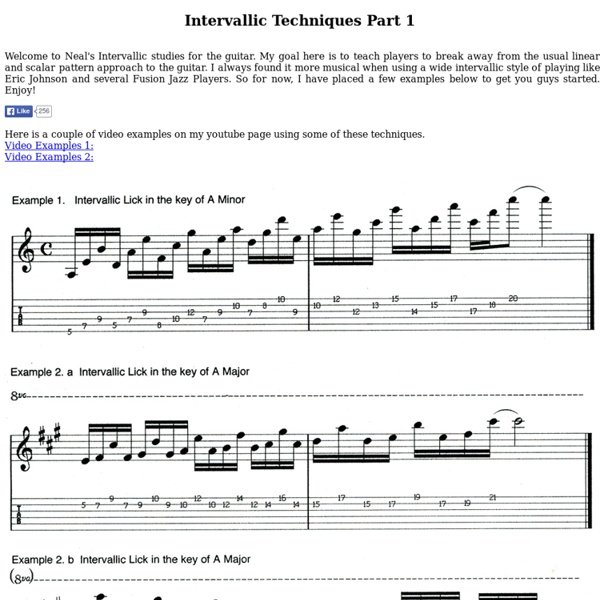Targeting a Mode - Turning Scales into Solos - Part 6
If there are two main points that you have, hopefully, gotten thus far in each of our “Turning Scales into Solos” series of lessons, it’s that, first and foremost, a solo should be determined by the song, by its mood, feel and chord progression. The second idea is that a single scale is rarely the only solution to finding a way to solo over a chord progression. Getting these two thoughts into your head is essential if you want to be able to solo over any song. If the point hasn’t been driven home yet then, again hopefully, this latest installment will help you drive the point home.
Cool Jazz Chord Progressions for Guitar
Are you looking for some cool jazz chord progressions for the guitar? Sometimes guitar players who are coming from a blues, folk or rock background think that jazz music is a cacophonous assortment of random notes. While such an argument could be made about some forms of free jazz, many jazz songs are based around standard progressions that aren't much different than the progressions found in other forms of music. Read on to learn more about some really cool jazz chord progressions for guitar. Get a Chord Chart
I Will Destroy This Robot Sheet-Music Sight-Reader, I Swear I Will
Sight-reading complex musical notation takes years of training, hundreds or thousands of hours of practice, sitting in front of the piano, a metronome drilling its infernal clicks into your brain. Eventually you'll gain the ability to read and perform just about any piece of music that's set in front of you, without ever having seen it before. It does not come easily, and it is not a natural skill; you have to keep practicing to retain it. Each month you don't practice takes two months to earn back the power you've squandered.
Playing Chords: A Guide for Bassists
Q: I recently bought a 6-string bass and started working on playing chords. How should I voice more complex chords (e.g. Gm13) using few (3 to 4) notes, while maintaining the quality of the chord? A: It is important to note a few things when doing this. Much of this is learned by doing it wrong and having someone correct you, but you should learn the difference between – for example – a 6 chord and a 13 chord.
21 Cool 3 Notes-Per-String Exercises to Rock On!
Photo by Jsome1 Playing 3 notes per string exercises is something I do on a regular basis. I use them to warm up, to become a faster guitar player and to spice up my improvisation. 3 notes per string licks and scales are generally used for speed picking. Whenever you hear a guitar player playing these really fast terrifying licks, it’s probably a 3 notes per string lick.
Improvisation Tools: Pentatonic by Gunharth Randolf
Improvisation Tools: Pentatonic 1) The "Rock Hall of Fame" Patterns With these two patterns you can nearly play all top 100 Blues and R&R licks. (The numbers represent the fingers of your left hand.)
Speed exercises for guitar
I've used these myself, and have found them to be quite amazing, both in strengthening your fingers and in training your mind. If you look at the patterns, they represent the three patterns that most scales are composed of: Half step -whole step, whole step - half step, whole step - whole step. If you get fast enough at playing it, people will worship you. If male, your penis will be enlarged, if female, your breasts will grow a size. Speed is everything in guitar. Okay, enough with the testosterone rant.
Better Guitar - Guitar Songs You Should Learn.
There are certain songs that every guitar player should try to learn. Either they are commonly requested or they have cool guitar parts that will expand your playing skills. I am going to list songs in several styles of music and explain why I think they should be add to your “play list.” While most are electric guitar songs, there are some acoustic songs also.



